The Battle of Assaye
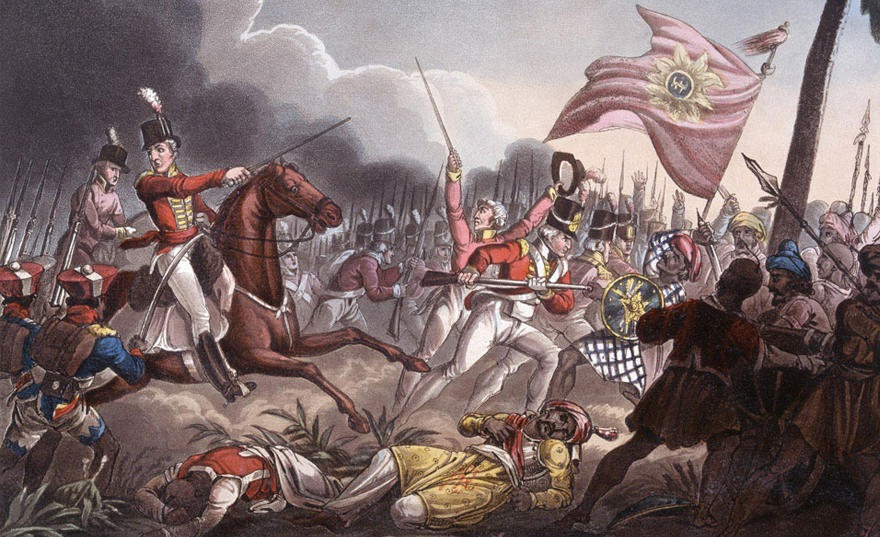
Many know of Wellington’s military achievements during the Peninsular War or at Waterloo, but his greatest success on a battlefield probably was the Battle of Assaye during the Second Anglo-Maratha War. With the release of the new collection from John Jenkins Designs called “Wellington in India”, it would be nice to do some recap.
The Second Anglo-Maratha War is quite a complex thing to explain, but still can be summarized like this. Before the war, the Maratha territory (most of inland India) was splitted between five major chiefs. They were often quarreling amongst themselves. At some point, Baji Rao II, 13th Peshwa of the Maratha Empire, had some relatives of his nemesis Holkar executed. A war started between the different chiefs and Baji Rao II found himself defeated. So he ran for the British East India Company and asked for help as his father was one of their allies during the First Anglo-Maratha War. The deal was to get help to recover his land and his territory would become a British protectorate. For England, this was a good occasion to gain a new territory and maybe submit the rest of the Maratha Empire. The commanders Gerard Lake, Arthur Wellesley (who would later become Duke of Wellington) and James Stevenson were dispatched to resolve this in the best of British East India Company’s interests and thus, England itself. And so started the Second Anglo-Maratha War.
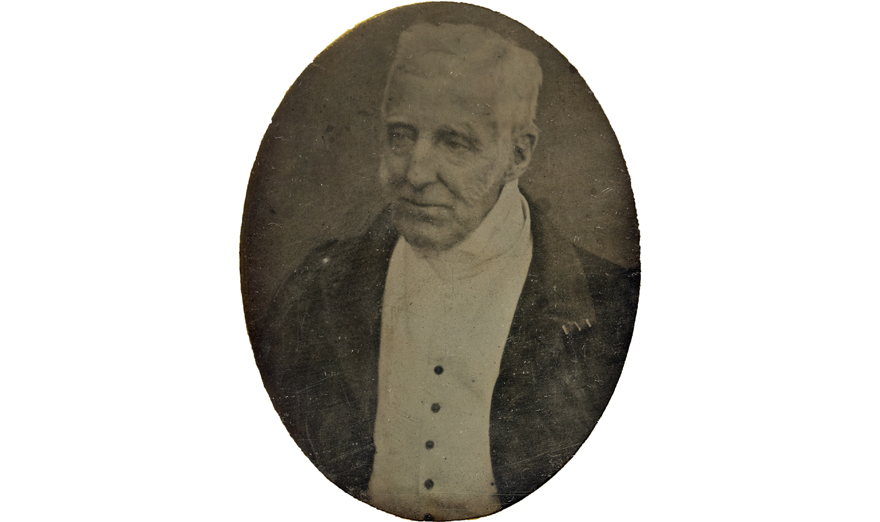
Daguerreotype of the Duke of Wellington by Antoine Claudet (1844)
The Maratha Empire was not an opponent to underestimate. During the early XIX century, India was an interesting target for many colonialist countries. So they were interfering as much as they could to get their share of wealths and territories. Maratha was quite a rich territory and so France was keen to send unofficial help and mercenaries. This is why many officers in the Maratha Empire were French and they trained troops to European warfare. The Maratha Empire also had access to a lot of wealth and population to raise and equip armies. This was making them very deadly opponents for the British troops.
The war officially started on September 11th 1803 and the Battle of Assaye happened only a few days later, on September 23rd. An outnumbered British force of 9 500 men and 17 canons were facing an estimated army of 50 000 men and 100 canons, including 10 800 European trained troops. Amongst the regular British troops were also Highlanders, allied Maratha cavalry, Mysore cavalry and sepoy troops recruited by the British East India Company. Sepoy was the nickname given to all native soldiers in the service of the European powers in India and is also the type of troop produced by John Jenkins Designs for this first release.
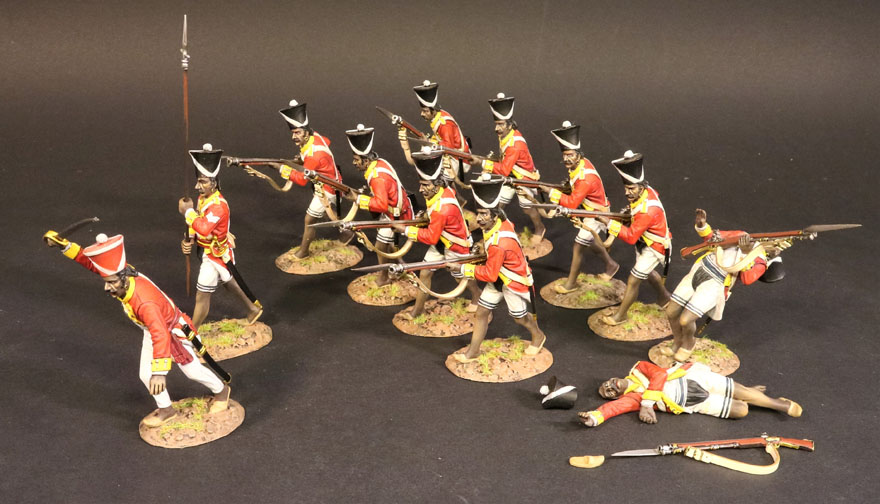
The new releases we will have during the next months.
At the beginning of the battle, the Maratha army was organized in a long line on a point of land between two rivers, offering a lot of fire power and having a river to slow down any advancing army. When seeing this, Wellington tried to flank them and move his army to the tip of the point between the two rivers. To counter his move, the Maratha army simply rotated by 90 degrees and readjust itself. But by doing so, the previously long line of firepower was forced to be reorganized in several ranks, making it less powerful as the deep ranks were making it impossible for the soldiers in the back to participate in the fight.
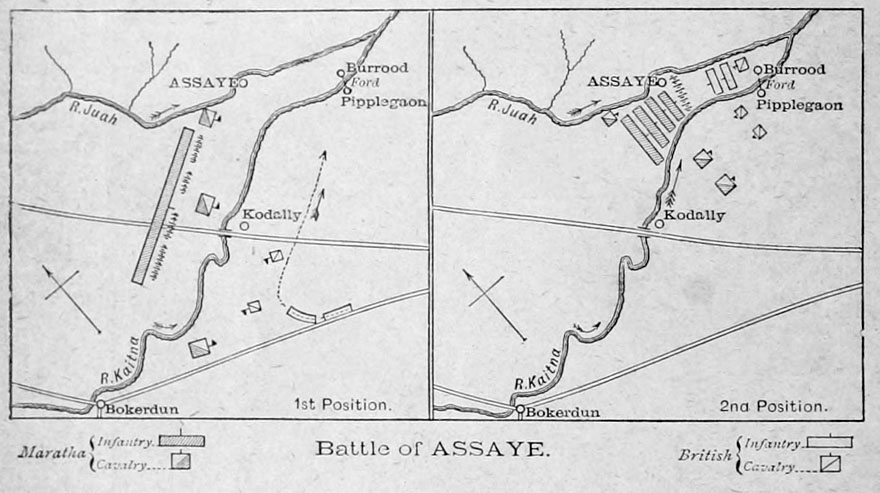
The two phases of the battle.
Still, the artillery fire was very violent and the British soon realized that they had to charge or be annihilated. So they did charge to disable the cannons in a costly close combat assault. When the first ranks of the Maratha artillerymen were all on the ground, the British army kept advancing and started to engage the following ranks. But a part of the artillerymen were faking to be dead and got back on their feet and turned their guns to shoot the British in the back. More British troops were sent forward and eventually the Maratha army collapsed and retreated. Against all odds, the British army won on that day but was too exhausted to pursue the retreating opponent. With 1600 wounded, dead and missing in action, the British army lost 17% of its troops. On the Maratha Empire side, it’s 6000 men who were killed or wounded on that day.
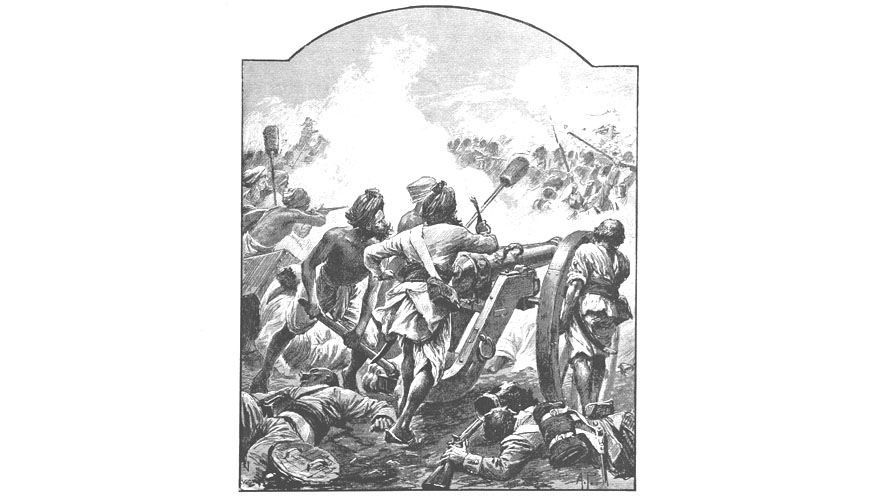
The Maratha artillery resurrecting and firing in the back of the British troops.
Eventually, the British and their allied Maratha won the war. This resulted in the end of the Maratha chieftains system as it once was. Most of the territory was now under British control by one of the different treaties signed with the East India Company. Despite the high number of casualties suffered by the British, Wellington himself said later that the Battle of Assaye was his finest accomplishment on the battlefield as it would have been easy to lose everything in such an engagement.

 Français
Français